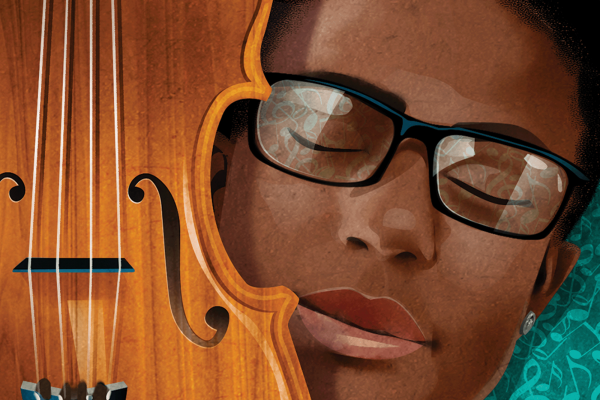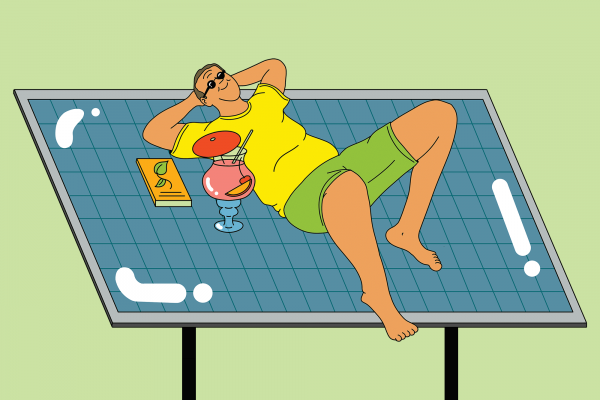Love books, culture, faith, and justice? Subscribe to Inscribed, a monthly newsletter by Jenna Barnett and guests, here.
I have always lived in stories. When I was a child, while everyone else was asleep, I would sit alone in a corner of my house, writing stories about ships at sea and people who lived in realms up in the clouds. I would also read with fervor about the Shire and islands that are visited by blue dolphins. I could nestle into the interior lives of others, and feel a kind of kinship with their experiences, seeing parts of myself in them, and understanding an unutterable connection between our heartbreaks.
Novelist Edwidge Danticat expressed a similar sentiment in Create Dangerously, her 2010 memoir about making art in exile. Reflecting on the aftermath of the earthquake that had struck her home country of Haiti that year, she wrote, “I did what I always do when my own words fail me. I read.” We share this human practice of story sharing and story seeking. Danticat writes of her “desire to tell some of [her] stories in a collaged manner, to merge [her] own narratives with the oral and written narratives of others.” Through the transformative power of creating and remembering, we connect to the threads of humanity, discovering the woven patterns that are formed through our stories.
We are predisposed to empathy – we feel fears, joy, relief, anger. When we feel, we take part in a very shared human experience. To learn how to offer empathy in emotionally healthy ways, we can read children’s books. English professor Cynthia R. Wallace explains that “steeping ourselves in other peoples’ stories, particularly stories that demonstrate the complex and full humanity of people who have been vulnerable to prejudice and injustice, literally rewires our brains.” This can only happen if we have the courage to write – and read.
In the January issue of the magazine, our writers have been thinking in story, imagining all the barriers that are removed when we share in our common heartbreak. In “Seeing Ourselves on Screen,” Da’Shawn Mosley writes about the surprising humanity found in the reality show Hoarders. He explains how the best kind of stories are the ones that reveal our shared traumas and recoveries. These are the stories we read and share when the earth shakes. It is silence that disconnects us.
In “Ministering to the Sick in the Face of Institutional Silence,” Arthur G. Fitzmaurice reviews Hidden Mercy, a novel by Michael J. O’Loughlin that tells the story of Catholics who ministered to people with HIV and AIDS while the institutional Catholic Church offered heartless silence toward the suffering of the community. Fitzmaurice explains that while Hidden Mercy focuses on the stories of survivors, “the horrific experiences of people who lived and died with AIDS also need to be told.” This is the hidden power of storytelling. In telling one narrative, we recognize what stories still need to be told, and whose voices must be remembered.
We must follow the patterns of the titular character of Kaitlyn Greenidge’s novel, Libertie, who “lives in poetry, songs, stories.”
1. The Price of Freedom by Elinam Agbo
Colorism, freedom, and the loneliness of love in Kaitlyn Greenidge’s “Libertie.”
2. ‘Spencer’ is the Ultimate I-Won’t-Be-Home-for-Christmas Film by Jenna Barnett
Kristen Stewart’s Princess Diana brings surrealism and tragedy to the onslaught of royal Christmas movies.
3. Seeing Ourselves on Screen by Da’Shawn Mosley
Hoarders reminds us that sorting people is never as easy as “good” and “bad.”
4. Ministering to the Sick in the Face of Institutional Silence by Arthur G. Fitzmaurice
Michael J. O’Loughlin's Hidden Mercy draws attention to Catholics who fought HIV/AIDS injustice with compassion.
5. ‘The Cartel’ Behind a Plague of Addiction by Danny Duncan Collum
Purdue Pharma, privately owned by members of the Sackler family, was “the cartel” behind a plague of addiction and overdose that has so far killed more than a half-million Americans.
6. Qinaqis Reads Isaiah by Julie L. Moore
A poem.
7. Politically Polarized Family Attempts White Elephant Gift Exchange by Jenna Barnett
By night’s end, they would be full of carbs and regret, vowing to play charades next year.
8. The ‘Yassification’ of Christ by Olivia Bardo
Jesus has been westernized and whitewashed to fit an image of divinity that is more palatable to white people.
9. Sojourners’ 2021 Film and TV Roundup by Jenna Barnett
The movies and shows we watched this year didn’t shy away from grappling with racism, sexism, and greed.
10. Our 2021 Book Roundup to Inspire Faith and Justice by Betsy Shirley
Here’s what Sojourners’ writers and editors read this year.
Got something to say about what you're reading? We value your feedback!







